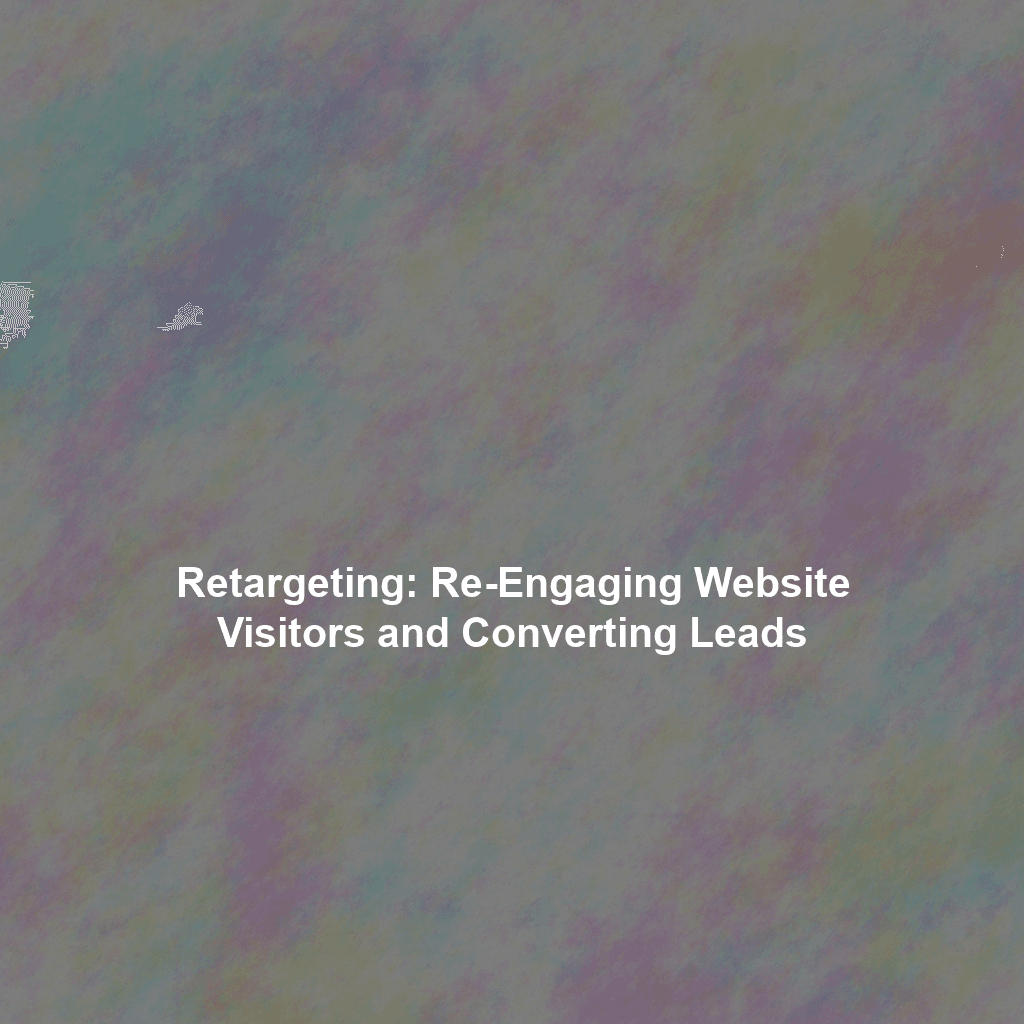In the dynamic world of digital marketing, capturing attention is only half the battle. Getting website visitors to convert into paying customers is where the real challenge – and the real ROI – lies. Enter retargeting, a powerful strategy designed to re-engage those who have already shown interest in your brand. This article will explore the ins and outs of retargeting, demonstrating how it can be a game-changer for your marketing efforts.
What is Retargeting?
Retargeting, also known as remarketing, is a form of online advertising that focuses on showing ads to people who have already visited your website or interacted with your online content. Imagine a customer browses your online store, looking at a specific product, but leaves without making a purchase. Retargeting allows you to display ads for that same product (or similar ones) to that customer as they browse other websites or social media platforms. This serves as a gentle reminder and encourages them to return and complete the transaction.
Essentially, retargeting keeps your brand top-of-mind and guides potential customers back to your website, ultimately increasing your chances of conversion.
Why is Retargeting Important?
Several factors make retargeting a crucial component of a successful marketing strategy:
- Improved Conversion Rates: By targeting users who have already expressed interest, you’re reaching a warm audience more likely to convert.
- Increased Brand Awareness: Consistent exposure reinforces your brand identity and keeps you visible in the minds of potential customers.
- Personalized Messaging: Retargeting allows you to tailor your ads based on users’ past behavior, making your messaging more relevant and effective.
- Cost-Effective: While not free, retargeting can often offer a better ROI than broad, untargeted advertising campaigns because you are focusing your spend on individuals who have already interacted with your brand.
- Cross-Channel Reach: Retargeting campaigns can span various platforms, including Google Display Network, social media (Facebook, Instagram, LinkedIn), and even email.
How Does Retargeting Work?
The process involves a few key steps:
- Website Tagging: You place a small snippet of code (often called a pixel) on your website. This pixel anonymously tracks visitors and adds them to a retargeting audience list.
- Audience Segmentation: You can segment your audience based on their behavior on your website. For instance, you can create a list of people who viewed a specific product page, added items to their cart but didn’t purchase, or visited a particular blog post.
- Ad Creation and Campaign Setup: You design compelling ads relevant to each audience segment and set up your retargeting campaign through platforms like Google Ads or social media advertising dashboards.
- Ad Delivery: As users browse the internet, the retargeting platform identifies those who are on your audience lists and displays your targeted ads to them.
- Optimization and Analysis: Continuously monitor the performance of your retargeting campaigns and make adjustments to your ads, targeting, and bidding strategies to maximize results.
Types of Retargeting
Pixel-Based Retargeting
This is the most common type of retargeting, relying on the aforementioned tracking pixel placed on your website. It allows you to reach visitors based on the specific pages they visited and actions they took while on your site.
List-Based Retargeting
This involves uploading a list of email addresses (or other customer data) to a platform like Google Ads or Facebook. The platform then matches these email addresses to user accounts and displays ads to those individuals. This is particularly effective for reaching existing customers with special offers or promotions.
Search Retargeting
This strategy focuses on targeting users based on the keywords they’ve searched for on search engines. If someone searches for “best running shoes,” you can show them ads for running shoes from your brand, even if they haven’t visited your website before. This is less common and more complex but can be effective in reaching a wider audience.
Best Practices for Retargeting Campaigns
To maximize the effectiveness of your retargeting efforts, consider these best practices:
- Segment Your Audience: Avoid generic retargeting. Tailor your ads to specific segments based on their website behavior.
- Create Compelling Ad Creatives: Use high-quality images and persuasive copy that resonates with your target audience. Offer discounts or special promotions to incentivize conversions.
- Set Frequency Caps: Don’t bombard users with too many ads. Frequency caps limit the number of times a person sees your ad within a given timeframe, preventing ad fatigue.
- Exclude Converters: Once someone converts, remove them from your retargeting audience to avoid wasting ad spend.
- Use Burn Codes: Offer a special coupon or burn code to track your retargeting efforts. This helps determine if a sale came directly from your retargeting campaign.
- A/B Test Your Ads: Experiment with different ad creatives, headlines, and calls to action to identify what resonates best with your audience.
- Monitor and Optimize: Regularly track key metrics like click-through rate (CTR), conversion rate, and cost per acquisition (CPA) to identify areas for improvement.
- Consider Customer Journey Stage: Tailor your message to where the prospect is in their customer journey. A person who just discovered your product should see a different message than someone who abandoned their shopping cart.
Choosing the Right Retargeting Platform
Several platforms offer robust retargeting capabilities. The best choice for your business will depend on your target audience, budget, and marketing goals. Popular options include:
- Google Ads: Leverages the vast reach of the Google Display Network.
- Facebook Ads: Allows you to target users based on their demographics, interests, and behaviors on Facebook and Instagram.
- LinkedIn Ads: Ideal for B2B retargeting, targeting professionals based on their job title, industry, and company.
- AdRoll: A dedicated retargeting platform offering cross-platform capabilities.
- Criteo: Specializes in dynamic retargeting, showing users ads for the specific products they viewed on your website.
Conclusion
Retargeting is an indispensable tool for modern marketers. By strategically re-engaging website visitors and tailoring your messaging to their specific interests and behaviors, you can significantly improve your conversion rates, boost brand awareness, and drive revenue growth. By following the best practices outlined in this article and continuously optimizing your campaigns, you can unlock the full potential of retargeting and turn browsing visitors into loyal customers.


